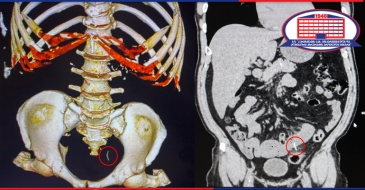
Lung inflammation (pneumonia in medical terms) is a very threatening pathology and requires long-term medication therapy.
In the interview, you will be informed about the following:
Delayed visit to a doctor or self-treatment might cause heart, respiratory or liver failure, infectious-toxic shock, renal failure, etc.
Every symptom is important – According to the World Health Organization's official statistics, pneumonia is among the 10 most common pathologies and diseases that are fatal without a prompt and proper course of treatment.
Pneumonia is an inflammation of alveoli (air sacs in lungs, an essential part of the respiratory system) and a terminal respiratory tract that is caused by hematogenous infiltration or inhalation of infectious agent in the lungs and is characterized with acute respiratory symptoms.
Pneumonia is caused by various bacteria, particularly: pneumo, staphylo, streptococcus, klebsiella, sometimes Escherichia coli, pseudomonas, legionella, plague bacillus, some viruses, mycoplasma, fungus.
Viral-bacterial associations play an important role in disease development. The cause infiltrates pulmonary tissues in a bronchogenic, hematogenic, and lymphogenic way, commonly from the upper respiratory system.
Pulmonologist of National Center of Surgery Lali Tsirdava discusses the topic.
– What symptoms characterize pneumonia?
– Primary symptoms of pneumonia are:
- Fever with dyspnoea;
- Discharge of sputum and/or pain in chest area;
- General weakness;
- Fatigue;
- Excessive sweating at night.
Following present classical, objective symptoms:
- Weakening of vocal percussion;
- Local bronchial breathing;
- Small air sac-like wheezing or crepitation;
- Increased bronchopathy.
– What category of patients is under particular risk?
– The following categories are under particular risk: smokers, alcohol addicts, drug users, people with the trauma or pathological development of the heart, people with diseased heart or any other organs, patients suffering from chronic depression and stress. Also, people who have weakened immune system due to flu, chemotherapy or HIV infection should particularly pay attention.
Commonly, pneumonia is difficult to overcome for people under long-term bed-rest due to various diseases.
Age group should be considered as well, for example, children under 3 years old and people above 60 years old
Also, risk-groups comprise:
- Pregnant women
- People affected by diabetes;
- Overweight people;
- People with immunodeficiency;
- Patients with heart failure;
- Who is affected by the chronic pulmonary disease;
- People affected by asthma.
The following are recommended to avoid pneumonia: vaccination, following hygiene (regular cleaning of hands), no to tobacco, care for the immune system with peaceful sleep, exercise, and healthy nutrition.
–What can you tell us about diagnostics and treatment methods of pneumonia at National Center of Surgery?
– In National Center of Surgery, all conditions are ensured to reach proper diagnosis and treatment, we're guided by modern guidelines. If we suspect pneumonia, "Ro" x-ray of the chest, complete blood count, biochemical analysis of blood, sputum smear culture and antibioticogram are conducted. In complicated clinical cases, chest computed tomography and bronchoscopy are necessary.
In diagnostics of disease, individual course of treatment is appointed.
– Do patients suffer from certain discomfort after recovery and are they required to take special care of the lung?
– After the treatment is done, patients don’t have health-related complaints.
For patients with frequent pneumonia, we offer a full examination to identify the cause of weakened immunity.
– What does so-called feverless pneumonia spread in society mean?
– In the case of pneumonia, the elderly and people with chronic diseases present with only a few symptoms or minor fever. In such cases, attention is paid to general symptoms of the disease (weakness, decrease in blood pressure, heart rate disorder). Signs of pneumonia are detected only by listening to the lungs and practically, x-ray exam confirms the diagnosis. Young patients can also develop pneumonia without a severe clinical picture. Moreover, the patient doesn't feel unwell, continues usual activities and subsequently, isn’t aware of the threat and doesn't seek a doctor. In such a clinical case, diagnosing pneumonia is completely random. In such cases, pulmonologists say that patient overcame pneumonia on legs. International colleagues called such condition a “pneumonia of walking patient”. Commonly, based on statistics, such form of pneumonia is frequent it high school students and youth and the cause is mycoplasma (microorganism).
Wish you health!
What are patients interested in
Complete Blood Count (CBC)
Qauestion:: Hello, I have following alterations in my blood analysis: Leukocytes WBC 9.61 norm 4.00 9.00, hemoglobin HGB15.2(12,2-14,7), monocytes mono#0,62(0,08-0,11), eosinophils eo%0,8(1,0-5,0) , ESR 28. What problem does this medical data indicate? Other indicators are in norm.
Food’s journey through
Qauestion:: Hello, when I drink water or eat food, it frequently gets into the airway, what can be the cause of it? Could you tell me how to perform first aid procedure myself?









